On ice cream machines
Since the earliest crude creations operating with salt and ice to produce the freezing effect, ice cream machines have developed quite a lot.
But what do these machines actually do? Can you just put all ingredients together quickly and let the machine fix the rest? Contrary to what one perhaps could expect, an ordinary ice cream machine actually only has two purposes – to freeze your ice cream base mix as quickly as possible, whilst infusing a certain amount of air into the mix. In other words, most parts of the work will still have to be dealt with by you – the machine will “only” churn and freeze (simultaneously) the mix for you.
The origins – crank your ice cream by hand!
Some, particularly the originally hand-cranked bucket-type ice cream machines operating with rock salt and ice actually retain a certain popularity to this very day.
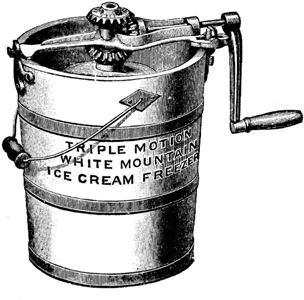
Typical old-style, hand-cranked ice cream maker. The ice cream base is put in the canister in the middle, and surrounded by rocksalt and water to ensure the freezing.
The hand-cranked models require only your (or your friends’) muscle energy to operate, need no pre-freezing and will literally deliver a bucket-load of ice cream in the end. Cranking will, however, require a certain sustained amount of hard work. You will also need a lot of ice and rock salt.
Just to prove the universality of the principle on which the hand-cranked models operate – If you have enough ice and salt at hand, and if you are ready to do quite a lot of shaking, you can actually make ice cream even in a plastic bag! Or why not test using your bike?
More common than the hand-cranked models today, however, are probably the different types of electrical ice cream machines, producing between 1/2 – 1 liter of ice cream in one batch.
Quick, universal ice cream machine advice
How, more exactly, each machine operates may differ. As stated in many recipes, you should “freeze the ice cream base according to the instructions of your machine.” Since you won’t have to make any of the churning/freezing by hand (provided that you don’t go for an ice and rock salt-hand churned one), you could focus on preparing the base well, for instance making sure that you only put already cold ingredients into your ice cream machine. Putting a still warm ice cream base in the machine will generally ensure lengthy freezing and, consequently, a lot of large, unwanted ice crystals to spoil the end-result.
As any steps that shorten the general time to freeze the ice cream are positive, solid flavouring ingredients should be pre-cooled before you add them to the mix.
Also, remember to normally add the solids towards the end: Flavouring ingredients like cookie crumbles, pieces of fruits, nuts etcetera should normally only be inserted just about before the ice cream is ready. If added earlier, the base will be too soft, and the solids tend to sink through and end up at the very bottom of your batch.
The two main types of electrical ice cream machines
Leaving the ice-and-rock salt machines aside, standard ice cream machines today tend to fall into one of two categories – self-refrigerating, and “freezer- assisted” ones. Self-refrigerating machines come with built-in freezing compressors. Freezer-assisted machines require some sort of pre-frozen canister to provide the freezing cold.
A typical freezer-assisting canister, usually spending most of its spare time taking up space in your freezer.
Freezer-assisted machines are less expensive, they produce fine ice cream but are much more likely to be left standing unused – as soon as you realize how little actual ice cream you will be able to get out of them at every occasion. To be able to freeze each batch, you will need to insert a pre-frozen canister. One such canister will normally only “last” one batch, before it needs to be put back to re-freeze in your freezer again.In other words, after each batch, you will have to wait several hours for the freezing canister to be ready for use again, before you can safely make another batch. Granted, the quality of the final ice cream is usually very good but unless you fancy inviting your friends over for a few teaspoons of it (alternatively filling your freezer with a number of spare freezing canisters, or working up a proper amount of batches ahead during a period of several days) the self-refrigerating compressor-type is much more recommendable.
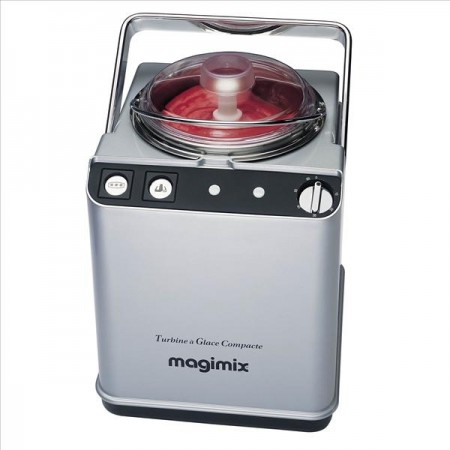
A self-freezing ice cream machine of the Magimix-brand. Other well-known brand names include Cuisinart, Gaggia and Lello.
Because of the built-in compressor freezing, these machines will be able to produce batch after batch after batch, as long as you have electricity in the house. On the negative side, they are more expensive and also tend to be somewhat bulkier. They also make more noise and generally weigh a ton.
Other types of ice cream machines
The Pacojet and its slightly less expensive cousin the Ninja ice cream maker are relative newcomers, still quite expensive but also very different from “standard” ice cream machines. The machines come with a beaker that can be filled with anything edible, then frozen in your freezer. When the beaker has been attached to the machines, its razor-sharp blades then “shave off” whatever in there which has been frozen, turning it into ice cream (or sorbet) in literally no time at all. While the Pacojet first became a favourite amongst many cooks, the high price tag likely deterred most household users. With the introduction of the Ninja machine, however, the “shaving method” of making ice cream has become much more widely accessible.
Other kitchen appliances (such as electric mixers, kitchen assistants and the like) may offer certain optional ice cream-making attachements. While being slightly different, they tend to require some kind of pre-freezing of the ice cream base or the attachment itself. They may, however, be a good alternative to freezer-assisted ice cream machines.
So, what to look for in a good ice cream machine?
Ultimately, affordability is likely to be one of the major issues for most people. How much would you be willing to pay for an ice cream maker? How much can you afford to spend? Your likely needs is of course also important.
While it might seem tempting to buy a cheaper, freezer-assisted machine (requiring pre-freezing/pre-frozen canister), you might soon come to regret such a choice. Ice cream lovers and aficionados should carefully consider whether the limitations in terms of output won’t defeat the whole purpose of having an ice cream machine – after all, what good is buying a cheap(er) ice cream machine, if it ends up not being used?
Still, as noted before, pre-frozen machines usually also make very tasty ice cream (just very little of it …) and some people might find them perfectly fitting to their needs. Generally speaking, however, I would strongly suggest that you invest in a self-freezing compressor type-machine.
Important other considerations for any ice cream machine would be the maximum and minimum volume capacity per batch, and the speed with which a batch is prepared (the quicker, the better). Will the machine allow for the preparation of successive batches?
Easiness of cleaning is another important aspect, as hygiene is very important for proper ice cream making. Sturdy construction, and (of course) appropriate freezing- and churning capacity would be other elements to consider.
Granted, you can make good ice cream as long as you have access to a freezer (go here for instructions!). But generally speaking, a good ice cream machine will make it much easier for you to reach the best results. And again – if you have the means and feel serious about ice cream: go for a compressor-self-freezing type! Even if it will cost you more to buy, you will not regret it!
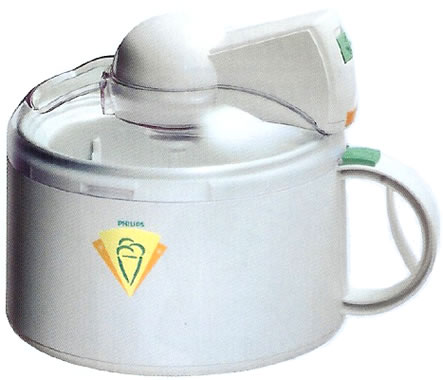
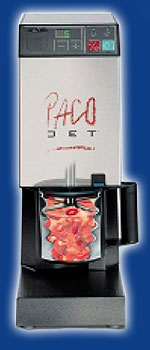

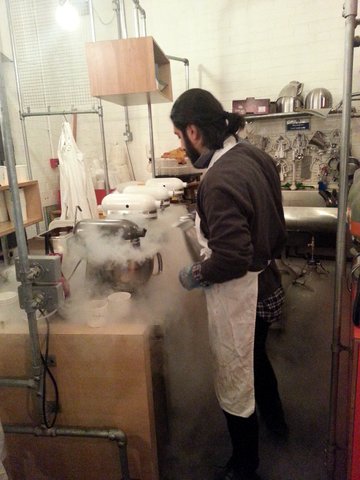
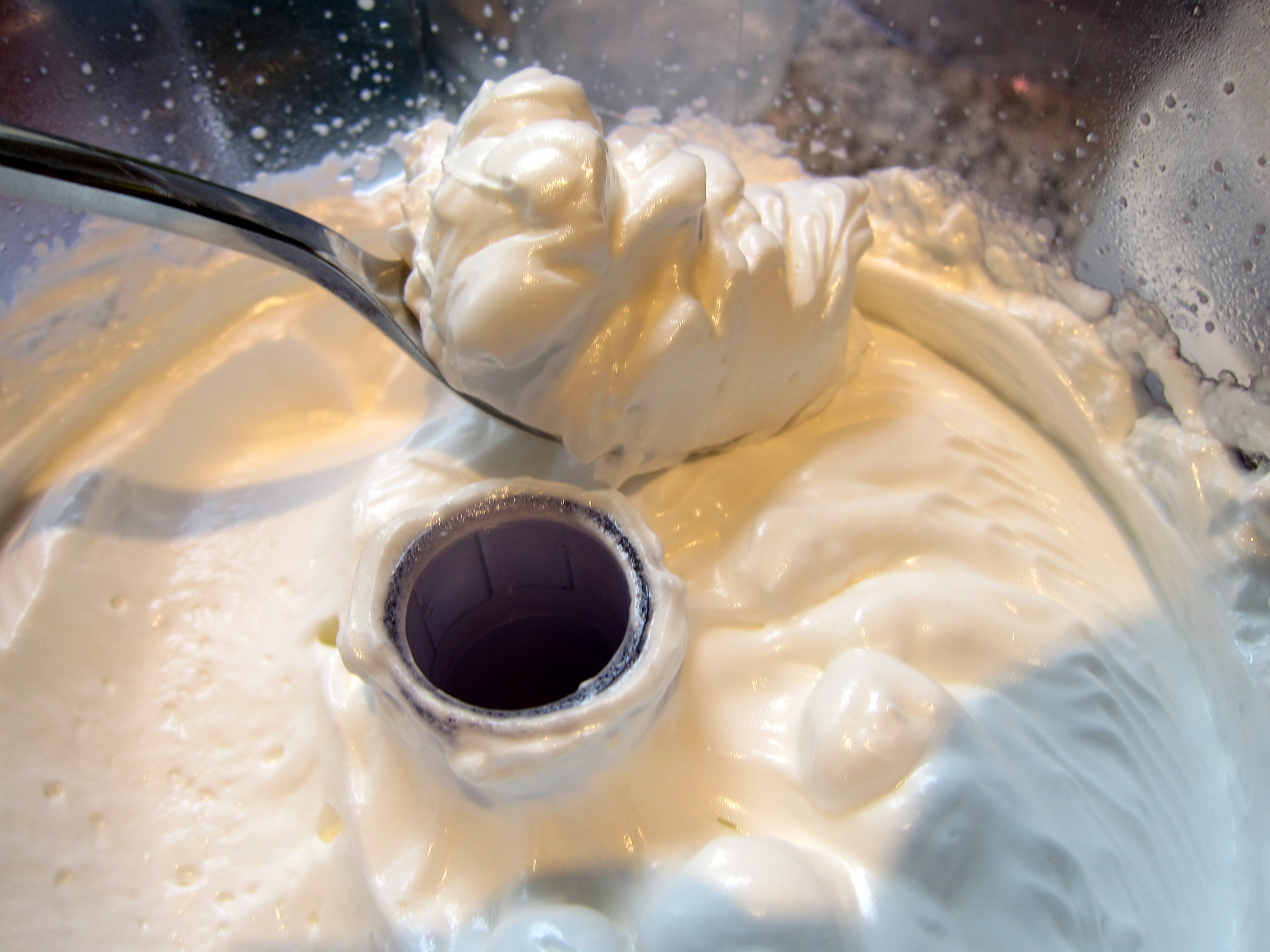


Hi wondering which ice cream machine/lmodel you use? Thanks
Hi Ashleigh,
I mainly use the Magimix machine pictured in the post.
You should add some links to recommended models! It would be helpful for readers, and you could make money from the referrals.
Hi I live in Australia and I am thinking of buying a commercial Ice cream making machine.
I am retired but I want to have a small business for the summer months (where I live is a tourist area “Metung”. in victoria)
I would only use the machine 4 to 5 months per (travel the rest)
but I would need to make a reasonable quantity to sell.
would you have any suggestions?
I have been looking on “Ali Baba” at Chinese made machines and now I am confused.
the ice cream that I prefer is scoop ice cream/hard ice cream is this the correct term?
best regards Stepve
Hi Stephen,
I wouldn’t dare to give you any specific suggestions as to which machine you ought to buy.
Clearly, you should avoid buying any “soft serve”-machines (since they, obviously, make soft ice cream). For the rest, you should consider exactly how much ice cream you intend to make per day – if you’d serve “hard” ice cream, you would probably want to prepare it in advance rather than on the spot. Depending on your intentions, that might mean that you won’t need one of the bigger models.
Still, if you plan on having a relatively “regular” ice cream parlour, you’d most likely be interested in finding a reasonably prized batch-freezer. The prize-range of these can vary considerably, and it might also be an idea to check if there are any cheaper, used machines on the market. For the rest, and apart from the obviously important question of how much you’d be willing to spend, it mainly comes down to finding a reliable machine with adequate guarantees or after-sale support.
Another thing you probably should look into, however, is whether there might be any national or local food/food health regulatory requirements that could affect your business. Ice cream-making requires a good deal of hygiene already at home, and the authorities in many countries may have a few things to say as to the required machinery for preparing and handling stuff like custard bases.
Best of luck and good machine-hunting!
Hi Anders thanks for the quick reply.
My kitchen is a registered kitchen as we grow prepare and sell olives olive products and sauces so that is no problem. we sell our products on farmers markets.
I am looking to buy a ice cream tricycle, and go a bit retro, still sell on the farmers markets and also as a street trader, the sales season here would be about 4 months then my wife and I can travel.
the set I am looking at holds 4 X 10 litre drums. at this I can’t say how much I would sell, I live in a small village Metung Victoria (google for curiosity) but we are a tourist destination and aussies like ice cream.
I would spend up to 10000 AUD on the machine but cheaper is better.
thanks again for your rapid response Steve
HI, I’m sorry but sir please do you know where can i find a catalgue or manual for my universal ice cream machine polaris hz60 ??,
I will be thankful
Dear Ola,
Sorry, but I have no idea.
Have you ever tried “fried” ice cream from Thailand? It’s not fired like Mexican Ice cream, it’s made on a table that is set to -30 degrees Celsius. I’m wondering if you’ve tried it what the liquid or base of the ice cream is and how it can be made with different types of milk.
Hi Billy,
I have not tried it myself but the “secret” behind so-called ‘ice pan ice cream’ is not so much the base (which can differ) but the quick freezing, coupled with the manual scraping/stirring/churning to mold the frozen ice cream and keep it together (go here for a quite instructive example: As can be seen in the video, the base used by at least that particular company could be based on several different types of dairy/dairy substitutes. You may also note that they use a special type of sugar, and also sea weed (likely in the form of Carrageenan or possibly Agar Agar; well-known agents in the context of ice cream making): both probably in order to improve on the final structure of the ice cream, which likely will be a bit fragmented and ‘snowball-like’ anyhow 😉 .
I’ve had a compressor ice-cream maker for 2 weeks now. It’s heaven but indeed, it took me years to buy another one as I’d started with a freezer -assisted machine, the very one pictured on the page as a matter of fact. Bulky, time-consuming, never cold enough for more than 15 minutes….awful.
Luckily, there was a sale and even failed recipes taste pretty good!
Anyway, enjoyed your article, it sure rang a bell.
Hi sir I am thinking of buying an ice cream machine from China I want to start up my own little business, I do not have any previous knowledge but I am willing to learn. Do you think an ice cream machine would do, because I do not have much resources to go big. Does you profit depend on how many cones sold or liters and kgs ????
Thanks in anticipation.
Dear Martin,
I’m afraid I’ll have to refrain from giving you any advice, since it all depends on so many factors which you probably are best suited to find out yourself (like, what kind of ice cream – more exactly – would you be planning to sell, where, and to whom?). Professional ice cream-making would typically also mean that you’d be wise to check if there are any national or local laws and regulations (like rules on healthy preparation of foodstuffs) which may have an impact on your business. Best of luck!
A good source is icecreamscience.com. He is an artisan ice cream maker in the UK, and the Sitebuilder explains how he has done it, right down to the electric stirrer.
I have had a Cuisinart c-100 for gah our years, handmade several hundred batches with good results. V suddenly, it barely freezes either mix after more than an hour. I pressed it thermometer and a heating pad against the side of the bowl and thermometer got down to only 7°C. This seems too high, and the compressor may have failed. Does anyone know what the specification should be?
Hi Roger,
7°C sounds way too high, so you might indeed be facing a compressor-failure:
The chilled bowl should rather hold temperatures in the range of below -20°C …
What an amazing blog with so much information u have offered us. Many thanks from London. For once we have a hot summer here (in 2017) and i will attempt some of your recipes. Best wishes, Dina
Hello Dina,
Thanks for your kind words. The summer is indeed very hot, but I guess that also gives us all the more reason to dive into ice creams and sorbets 😀 Best of luck!